Temples of Jagat Sukh
The road-side village of Jagatsukh is located on the left bank of Beas about 15km from Naggar. This ancient village (old name Nast) assumes great importance as it was the capital of Kullu before Naggar. Mian Goverdhan Singh in his book, Wooden Temples of Himachal Pradesh mentions that there are seven temples at Jagatsukh. Penelope describes only two in her book along with mention of a number of stories about Jagatsukh. She gives a vivid description of a bungalow, built in 1880s, in the southern end of the village, for the ‘great father figure of Indian archaeology, General Sir Alexander Cunningham, who used it as his base for an expedition to Ladakh’ (this old bungalow located near present bus-stand of Jagasukh was owned by Pandit Balak Ram, then by an ‘eccentric’ English woman artist Mrs. Budd, and now by Mr Shafi). Penelope tells an interesting story about Jagatsukh, “It was here that, in the early sixteenth century, Sidh Pal met the goddess Hidimba, under the guise of an old woman, who prophesied that he would recover the kingdom of his ancestors. And it was here too that the dynastic name was changed from Pal to Singh, for when Sidh Pal was one day holding a calf for his Brahmin hostess while she milked the cow, a lion suddenly appeared which he killed on the spot and was from then on given the name Singh-lion-which he passed on to his successorsâ€.
During my various visits to Jagatsukh, in late January and early February 2009, I could see temples of Sandhya-Gayitri, Shiva-Parvati, Jagannath, Rama, Jamdagini Rishi, Takshak Nag (Banahra) and Bhandar of Takshak Nag (Banahra) in company of Pandit Mehar Chand Shastri of Jagatsukh. In addition, we also climbed upto the Jagatsukh Fort of Pitti Rajas, also referred by Penelope.
Sandhya Gayitri Temple
The chronology of temples in Kullu Valley is difficult to understand, though there is a reference to an epigraph found in this temple by Hiranand Sastri (Historical Documents of Kullu, 1907-08) on two stone slabs referring to a date of construction around 1428 AD (Hutchinson and Vogel). Most probably, Maharaja Udharan Pal, 72nd Raja Kullu built it. Many authors believe that the present temple (Vernacular Temple) has been build in place of the eighth century original temple (Classical Temple), the relics of which can still be seen in the courtyard of the present one. This gabled roofed temple which has been renovated and modified several times, is covered with the slate roof and built on a rectangular platform.

The present day wooden carvings are very elaborate, intricate and innovative. Each verandah post is different from the other, perhaps a tribute to the work of village artisans of Kullu in the modern times. The ornate posts not only provide an aesthetic look to the temple, they also bear the dead weight of the masonry-work of the gabled roof. Overall, the wood-work bear the mark of still-surviving art of wood-carving which now, almost, is confined to the temples.
The best that I like are the verandah-posts (in wood) and lattice windows (in stone) on the side and back walls of the temple.
During my 1990 visit, I could see the detail of this temple as given in a photograph of Penelope’s book: “the lower stone is carved in the classical style, the upper part is decorated with nineteenth-century wood carvingsâ€. It appears that the temple has undergone renovations since then and the lower stone can now (in 2009) be seen in the court yard.
A number of reasons contribute to the decline of the craft of wood carving: an ever-increasing debased aesthetic taste of local people (mostly influenced by Bollywood films and television); lack of patronage and funds, and shortage of wood.
A village fare, Chacholi mela is simultaneously held at the temples of five villages of Jagatsukh, Banahra, Khakhnal, Gojra and Bahnu on the full moon day (Purnamasi) of Chaitra (in February or March). The temple has two tall sactred poles (Dhwajas), indicating the recent renovations.
The illustrious archeologist Omacanda Handa makes a very appropriate comment, “Nevertheless, the deities of the people have been keeping the tradition of the splendid craft alive and going. For, if not the human being, the gods here stubbornly regard tradition, and, if left to them, they would not like to deviate from the traditional values and tastes. These temples hopefully provide a ray of hope for the traditional arts and crafts to surviveâ€.
Gauri-Shankar Temple, Jagatsukh
A few yards behind the Gayitri temple is the location of this beautiful Shikhar (Type 1) temple of Shiva and Parvati (Gaurishankar). It is a very richly adorned temple. Penelope mentions its height as eight feet. It appears that the Archeological Survey of India has done a lot of renovation work here and now the temple looks of greater height than recorded by Penelope. It has a square garbhagriha (sanctum sanctorum) and a small portico with columns. The lady priest at the temple introduced me to the figures of Vishnu on southern side, Surya on the east and Brahma on the north.
The Ganesha is located just above the entrance door.
The upper part of both the columns are richly carved with floral designs.
Penelope describes, “Leaning up against the plinth are several image slabs of the same presumed early period-seventh to eighth century-as the carving still in situ, except for one lion of Durga killing the buffalo demon which may be of eighth or ninth centuryâ€. Despite my best efforts, I could not locate the Durga image. Presumably, this has been relocated or stolen.
Jagannath Temple, Jagatsukh
To the north of the Gayitri temple, a village alley leads to the Jagannath temple, which is relatively of recent origin.
The image of Krishna was brought from Jagannath Puri, hence the name Jagannath temple. Lord Jagannath and Rama (who is enshrined in a house across the street) are also part of the same village fare that is held at the Gayitri temple.
Views of Jagatsukh village from Banahra and Pitti Fort
Takshak Nag Temple at Banahra
This is about two hours uphill walk from Jagatsukh to Takshak Nag temple, located in the sanctuary of the cidar forest in one of the most beautiful and pristine sites.
The temple is on a rectangular platform and further strengthens the view that the fine art of decorative wood carving is still alive among the local villagers and the local deities are at the helm of its proliferation. The temple is of Type 2 i.e. built in the alternate courses of wood and rectangular stones.
The tiring walk to the temple is rewarded with a magnificent view of the background mountains, an extension of Hamta towards its right side.
Looking at the temple, I felt exhilarated. Sometimes, I do feel that I had photographed these temple before their renovation/modification so as to have a comparative account of the shape and structure of the temples.
There are a number of Nag (Cobra serpent) temples in the area. Powerful animals such as Cobras are often considered to be forms of God. The Nag temples are devoted to lord Shiva-the destroyer of all evils and built in the outskirts of the villages. The Takshak Nag temple has a Shivling in it and a place to perform Yajna to invoke divine favour for the welfare of the people and ward-off evil spirits and natural calamities. A village fare is held at this temple after two or three days of Docha Mocha fair in Beas Valley in May. Local people believe that the snakes come out of hibernation around Shivratri (March) time and gain their venom by Nag Panchami (August) when they are worshiped most.
View of Deo Tibba Peak from below the Pitti Fort in Upper Banahra
Takshak Nag Temple Bhandar
About a km walk from the Takshak Nag temple is the Bhandar (store-house) of Takshak Nag in the Banahra village. This is a double story building built with the stone and wood in alternate courses (Type 2). The main door is adorned with ibex horns. The belongings of Takshak Nag are kept in this store-house.
Patal Temple above Banahra
Despite my best attempts, I could not know much about the little temple built at the base of a huge monolith. Remarkably, the view of Jagatsukh village is simply breathtaking from here. The temple is said to be part of legends related to the old rulers of Banahra and Jagatsukh. Its location is very strategic if one starts on a trek from Shuru to Arjun Gufa to Patal temple to Takshak Bhandar to Takshak temple and then onwards to the base of Dev Tibba.
Piti Fort, above Banahra
Sanjeeva Pandey is a forester, environmentalist and an active conservationist who was instrumental in attaining the World Heritage Status for Great Himalayan National Park (GHNP) in Himachal Pradesh. He lives in Shimla


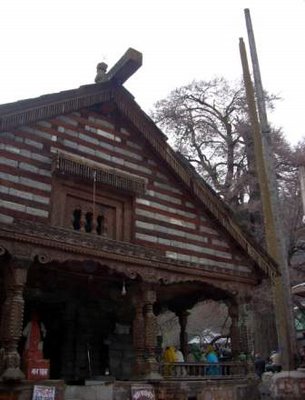
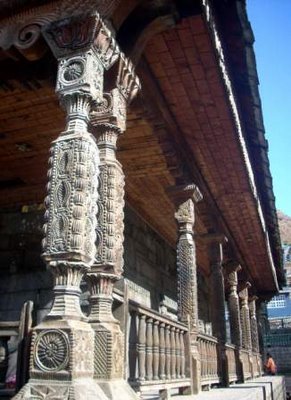

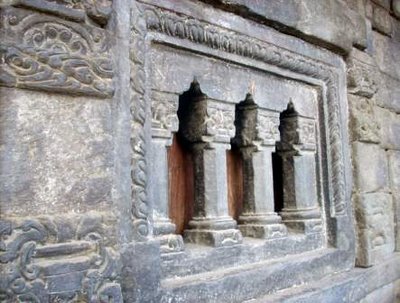
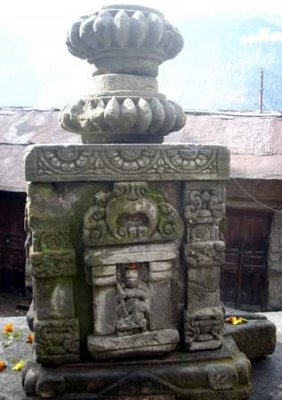
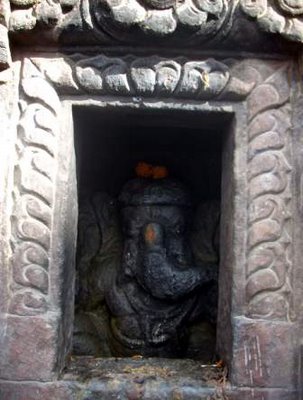
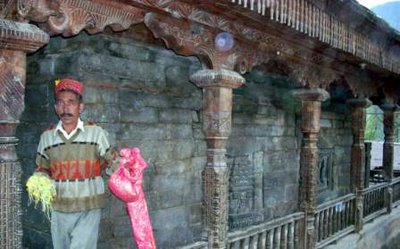
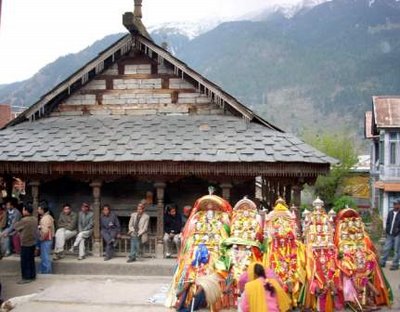
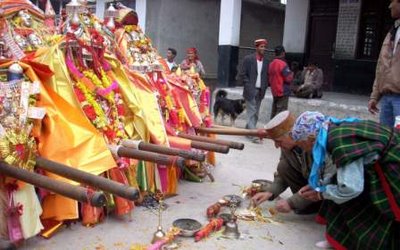
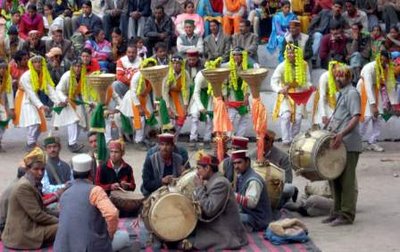
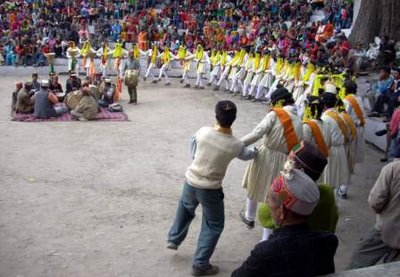
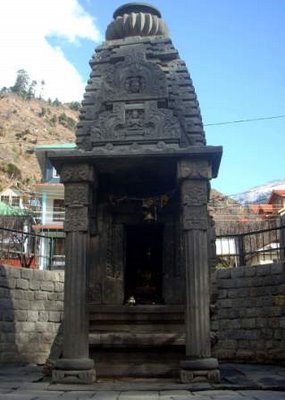
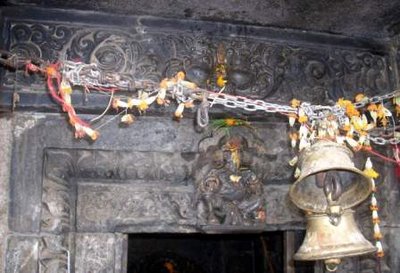
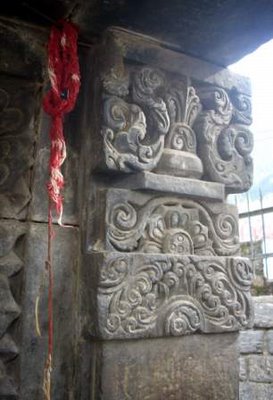


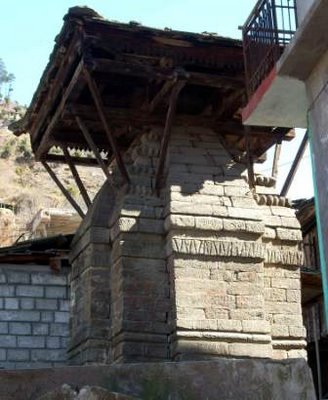

My book on art history and pictures of Masrur with the title of “Coronation of Shiva-Rediscovering Masrur temple” has been published by Haranand Publishers Delhi and will be released soon. Already pre release curtain raiseer have appeared in Divya Himachal, Himachal ThisWeek and Aap Ka Faisla,
Prof N.K.Singh